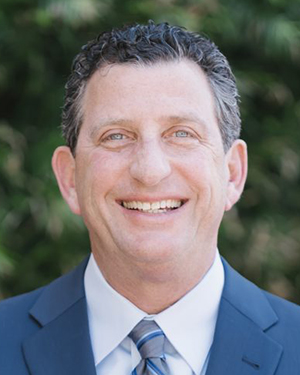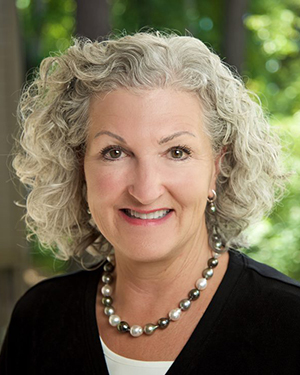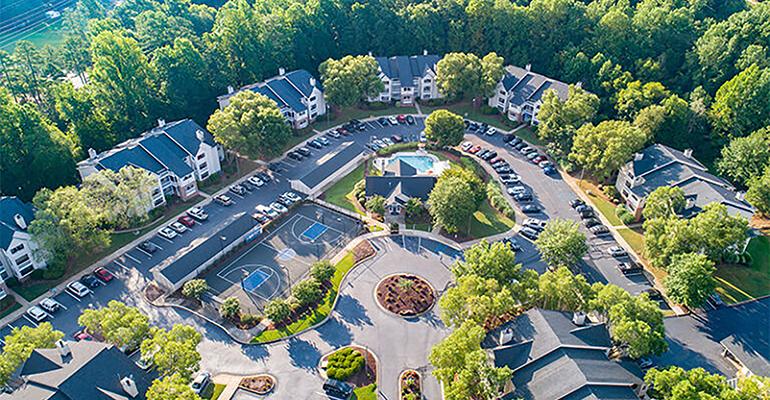Every commercial real estate investment firm relies on a different set of strategies to build its portfolio.
For Woodland Hills, Calif.-based Investors Management Group (IMG), its recent acquisition of The Whitley Apartments in the Greenville, S.C. metro area is a perfect example of its “IPA” investment strategy. The acronym stands for: Intrinsic Value (I), Price Per Pound (P); and Affordability (A).
Intrinsic value is about evaluating the property beyond its current valuation and considering its location, building features and other intrinsic attributes.
Digging into price per pound allows the firm to fully understand the competitive landscape and determine whether the property price is attractive.
And understanding the level of affordability for each property aids IMG in determining whether it is a good fit for the firm’s portfolio. It invests only in assets with above-average intrinsic value that still offer tenants rental rates that are at less than 30 percent of median monthly incomes in the area.
IMG’s Founder-CEO Neil Schimmel and Principal & Co-President Karlin Conklin describe IPA as a “tried-and-true” philosophy for identifying promising multifamily opportunities. In addition to Schimmel and Conklin, the firm’s leadership team includes Marc Gordon, principal, co-president and CFO.
Since IMG’s inception in 2009, it has transacted 12,000 total units totaling $1.5 billion nationally and raised $611 million in equity. The firm now has $1 billion in assets under management.
IMG’s portfolio consists of 22 properties totaling roughly 5,000 units in nine metros: Portland, Ore., Seattle, Denver, San Antonio, Tampa, Fla., Atlanta, Greenville, S.C., Charlotte and Raleigh, N.C. Over the past 12 months, the firm has expanded its internal team to 17 professionals and added 1,600 units to its portfolio through more than $300 million in acquisitions.
The Whitley Apartments represents the firm’s second acquisition in the Greenville area and sets the stage for its future growth in the state—last August, IMG purchased Tapestry at Hollingsworth Park, a 242-unit asset. The 250-unit Whitley apartment community is located close to Clemson University and other major Upstate South Carolina employers.
IMG acquired The Whitley Apartments for $42.5 million—an “excellent price per pound,” according to Conklin. The company plans to invest over $2 million in capital improvements at the property to meet the accelerated demand for upscale amenities.
So far, the company has received strong response to its Greenville offerings, raising more than $80 million from hundreds of investor clients to date, according to Schimmel.
WMRE recently spoke to the firm’s executives about its strategy and plans for the future.
This Q&A has been edited for length, style and clarity.
WMRE: What is IMG’s investment strategy?
 Neil Schimmel: We invest in value-add multifamily. We are highly disciplined. We don’t chase anything, though we do consider ourselves opportunistic. For example, deep value-add isn’t paying right now. Most of the acquisitions we’re making are either newer inventory or in need of cosmetic refreshening. We come in with a very light touch and are very targeted in achieving our bang for the buck.
Neil Schimmel: We invest in value-add multifamily. We are highly disciplined. We don’t chase anything, though we do consider ourselves opportunistic. For example, deep value-add isn’t paying right now. Most of the acquisitions we’re making are either newer inventory or in need of cosmetic refreshening. We come in with a very light touch and are very targeted in achieving our bang for the buck.
We’re looking in markets that have growth in population, jobs and income. If a market doesn’t have those three things, we’re going to look for the markets that do.
Karlin Conklin: Because of the pandemic, more people want to work remotely, at least part of the time. The population is shifting to more suburban locations, and that has guided us to look at product in suburbs and smaller markets. We can spend less, but still add value that meets our investors’ and renters’ expectations.
Neil Schimmel: For example, over the past several years, we’ve bought five properties across North San Antonio for a total of 1,400 units. Now everyone has “discovered” San Antonio. We still think it’s a good value, but there are other communities near the market that have newer product and better valuations. A few months ago, we acquired Sendero Ridge, a 120-unit apartment community in Kerrville about 60 miles from downtown San Antonio.
WMRE: What was IMG’s original vision and mission? Has that changed over time?
Neil Schimmel: When I launched IMG in 2009, I started out doing what I call “New York-style” deals—investing with institutional investors on value-add deals with a promote structure and two- to three-year holds. In 2014, I wanted to acquire a high-rise residential building in Tacoma (Wash.), but I couldn’t get any institutional investors interested in it. However, I did have an investor group that needed to do a 1031 exchange.
Karlin and I had worked on some of the same deals, though on different sides, since the early 2000s. She specialized in different ownership structures, Tenancy in Common [“TIC”] deals specifically, usually with 1031 investors. The investors she represented wanted passive income and long-term investments, unlike the institutions that I had been working with. I realized that I needed that type of investor for the deals that I wanted to do moving forward.
Karlin and I had always had a strong relationship, so we teamed up on that Tacoma deal, acquiring it through a TIC structure. This co-ownership strategy has been very successful for us and is what we’re still using today for our acquisitions.
WMRE: TIC structures got a bit of a black eye in the mid- to late-2000s. How are your TIC deals different?
 Karlin Conklin: They did have a black eye for a while. Part of the reason was that TIC groups weren’t set up in a way where decisions could be made in productive manner. In IMG’s syndications, we have a maximum of 15 co-owner positions, which allows us to put together groups where everybody is like-minded regarding their investment goals and the business plan.
Karlin Conklin: They did have a black eye for a while. Part of the reason was that TIC groups weren’t set up in a way where decisions could be made in productive manner. In IMG’s syndications, we have a maximum of 15 co-owner positions, which allows us to put together groups where everybody is like-minded regarding their investment goals and the business plan.
IMG is always one of the 15 co-owners. We pool Limited Partner money to fund that position. We might have over 200 LP investors who can participate at a lower minimum investment amount [$25,000]. IMG’s position represents 45 percent to 50 percent of the equity raised for any given transaction. The other co-owners are typically 1031 exchange investors or high-net-worth individuals who are making a minimum investment of $750,000.
I know others sponsors close the deal and then syndicate it post-closing, but we don’t do that. As the real estate sponsor, we will put a property in contract, and all the investors close on the transaction on the same day.
WMRE: What type of investors does IMG target? Do you anticipate your investor base will change in the near future?
Neil Schimmel: Our investor base has evolved from institutional investors to high-net-worth individuals, family offices and 1031 exchange investors. Our investors today are patient and understand real estate; they’re going for the best risk-adjusted return and predictability. Our group has grown to more than 1,000 accredited investors, all of whom are domestic.
Oftentimes they’re looking for passive income, to trade into better quality real estate, or they’re tired of being landlords and winding down their own real estate. With our TIC ownership structure, they still review the financials, they still approve the annual operating budgets for the buildings, but they don't have to deal with the day-to-day.
WMRE: How does IMG raise equity and attract new investors? What kind of investor outreach do you conduct?
Neil Schimmel: Most of our investors come to us through word of mouth. Over time, we have put ourselves into a niche that is very, very unique and have become known as a firm that takes 1031 exchange dollars. We offer investors an opportunity to defer hundreds of thousands on taxes and invest in institutional-grade properties, which they couldn’t do by themselves. That’s why we continue to grow.
WMRE: How does IMG communicate and keep the conversation going with its existing investors to make sure they are on the same page regarding strategy, targeted returns etc.?
Karlin Conklin: When it comes to our investors, we’re a high-touch company. In some respects, we act like the small company we were years ago. We publish quarterly webcasts to review property performance and market updates, and we have a dedicated investor relations staff for client support.
Neil Schimmel: We host in-person events where our investors can get to know everyone in the company and what they do. We also conduct property tours. For example, we’ve hosted an event in the Southeast where our entire investor network was invited to road trip with us. Over three days, we toured six of our properties in two states along the I-85 corridor.
Recently we hosted 100 clients in San Antonio to tour five of our properties there. We had investors, insurance reps, financial professionals and vendors on our chartered bus. I grabbed a mic and talked them through our rationale for acquiring the properties and the renovations that we made on each one.
WMRE: What is the range of returns that IMG expects on its investments?
Karlin Conklin: When we did our modeling five years ago, we were targeting IRR of 15 percent and cash-on-cash returns of about 8.5. Today, we’re targeting lower IRR and cash-on-cash returns. Interest rates are going up, pricing is through the roof, so let’s be realistic.
When we have sold deals, we’ve blown our projections out of the water. About 85 percent of our investors have invested in more than one deal. There are very few that place money with us only once.
WMRE: What is IMG’s average hold period? Does it range from deal to deal or is it standardized?
Karlin Conklin: We underwrite to a five-year hold, but Neil has been extraordinary at finding real estate in undiscovered submarkets where values keep going up. At year three, we’ve done a comprehensive analysis, refinanced so we could do big capital return to investors and hold for longer. When we do a refi or return of capital, about 85 percent reinvest profits into another IMG-sponsored property.
WMRE: What role does technology play at IMG, specifically as it relates to communicating with investors, raising money, managing your properties and sourcing acquisitions?
Karlin Conklin: New crowdfunding technology has disrupted traditional investment circles. It’s helped us reach a whole new wave of accredited investors interested in commercial real estate. We partner with RealPage and were one of the first sponsors in the U.S. to launch their new investor portal. Our clients can review new opportunities, download their reports and tax documents, or watch our webcasts on demand all at their portal.
WMRE: What differentiates IMG from other investment firms?
Neil Schimmel: One differentiation is that we identify hot markets before other investors realize they’re hot. We get in at the right time, and we get out at the right time.
Because of the deal volume that Karlin and I have done over our careers, we’ve developed deep relationships with the best-in-class providers in the regions and markets we’re in. We’re not parachuting in. We already know all the people we need to know to be successful.
This ‘boots on the ground’ philosophy differentiates us. When we buy properties, I’m there. I’ll stop by unannounced to check in on leasing and property management, which we outsource.
WMRE: The multifamily sector is one of the hottest and most competitive asset classes today. How is IMG facing its competition and coming out on top?
Karlin Conklin: Because we’ve been in the industry for so long, we have deep relationships that allow us to preempt other buyers. Of the acquisitions that we did last year, 40 percent were off market. Also, we are acquiring assets at prices where there’s less competition; we used to acquire properties in the $30 million to $70 million range, but now most of our opportunities are below or above that range.
WMRE: What plans do you have for IMG for the next couple of years?
Karlin Conklin: Adding new staff has positioned us for sustainable portfolio growth. We have 5,000 apartment units today, and by next year we want to be at 6,000. We’re focused on unit count instead of transaction volume. We also plan to sell two to three properties.
WMRE: What is the biggest success that IMG has experienced? What is the biggest failure?
Karlin Conklin: Our biggest success is that we’ve been able to stay true to our vision and building our platform with investors who are repeat investors. We are building a legacy company.
As far as our biggest failure, we’ve had disappointments, maybe holding on to properties to too long instead of selling, but overall, we’ve avoided any major missteps.
Neil Schimmel: It’s only a failure if we didn’t fight our way through something. At Orion Apartments in Tacoma, we had fires and floods.
Karlin Conklin: That’s right. We are the people who take a property and grind through disasters when they happen.





